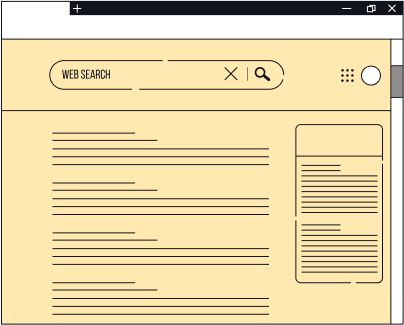Implementation Phase of SDLC

Database setup and configuration is a crucial aspect of software development that involves creating an efficient and well-structured database to handle data effectively. The database serves as a repository for storing and managing data, allowing for efficient retrieval, manipulation, and storage of information. Proper setup and configuration of the database are essential for ensuring data integrity, security, and optimal performance. Let's delve into the key elements and considerations involved in the process of database setup and configuration:
2. Database Design:
Once the DBMS is chosen, the next step is designing the database schema and structure. Database design involves identifying the entities, relationships, and attributes that need to be stored and defining their structure using concepts such as tables, columns, primary keys, and foreign keys. The design phase ensures that the database structure aligns with the data model and effectively represents the business domain.
4. Data Validation and Constraints:
Ensuring data integrity is crucial for maintaining the accuracy and consistency of the database. Data validation involves implementing checks and constraints to enforce data quality rules. This includes setting data type constraints, defining minimum and maximum values, applying unique constraints to prevent duplicates, and implementing referential integrity constraints to maintain data consistency across related tables.
7. Performance Monitoring and Tuning:
Database performance monitoring involves analyzing and optimizing the database to ensure efficient and reliable operation. Monitoring tools can be used to track metrics such as query execution time, resource utilization, and disk space usage. Performance tuning techniques, such as query optimization, database parameter configuration, and data partitioning, can be employed to improve system responsiveness and scalability.
9. Documentation and Maintenance:
Thorough documentation is crucial for maintaining the database and ensuring its long-term sustainability. Documentation should include details about the database structure, schema, relationships, constraints, backup procedures, and any specific configuration settings. This documentation aids in troubleshooting, database maintenance, and onboarding new team members.
1. Database Selection:
The first step in the database setup process is selecting an appropriate database management system (DBMS) that aligns with the requirements of the software project. Popular DBMS options include MySQL, PostgreSQL, Oracle, Microsoft SQL Server, and MongoDB, each offering distinct features and capabilities. Factors to consider when choosing a DBMS include scalability, performance, compatibility, security, and community support.
3. Indexing and Optimization:
Indexing plays a vital role in optimizing database performance. By creating indexes on frequently accessed columns, such as primary keys or columns used in search queries, database operations can be performed more efficiently. Indexing improves data retrieval speed, reduces the need for full table scans, and enhances overall system performance. However, it's important to strike a balance, as excessive indexing can impact write performance and increase storage requirements.
5. Security and Access Control:
Database security is of paramount importance to protect sensitive data from unauthorized access or manipulation. Establishing robust security measures involves configuring user roles and permissions, implementing authentication mechanisms, encrypting sensitive data, and auditing database activities. Adhering to best practices and following the principle of least privilege ensures that only authorized individuals have access to the database.
6. Backup and Recovery:
Implementing a backup and recovery strategy is crucial to protect against data loss and system failures. Regularly backing up the database ensures that data can be restored in case of accidental deletion, hardware failures, or disasters. It is important to define backup schedules, store backups in secure locations, and periodically test the recovery process to ensure its effectiveness.
8. Scalability and Replication:
As the application grows and user demands increase, it is essential to plan for scalability. Scaling a database involves adding resources, such as increasing server capacity or employing sharding techniques, to handle growing data volumes and user traffic. Database replication can be implemented to enhance availability and distribute the workload across multiple database instances.
Effective database setup and configuration are vital for ensuring efficient data management, optimal system performance, and reliable access to information. By carefully designing the database, implementing appropriate security measures, optimizing performance, and planning for scalability, developers can establish a robust foundation for data storage and retrieval within the software system.
4. Iterative Development: An Agile Approach
Here's a ground-level description of iterative development and its key characteristics:
1. Incremental Progress:
Iterative development focuses on delivering the software in small, functional increments called iterations or sprints. Rather than attempting to build the entire system at once, developers prioritize and tackle specific features or user stories in each iteration. This approach enables the early delivery of working software and provides stakeholders with tangible progress at regular intervals.
2.Continuous Feedback:
Iterative development thrives on frequent feedback loops among stakeholders, including clients, end-users, and the development team. Regular demonstrations of working software in each iteration allow stakeholders to provide feedback, identify areas for improvement, and make course corrections. This feedback-driven approach ensures that the software aligns with the desired outcomes and promotes collaboration and transparency throughout the development process.
3.Adaptive Planning:
Instead of creating a rigid, upfront plan, iterative development embraces adaptive planning. The project requirements and priorities are evaluated and adjusted at the beginning of each iteration based on feedback and evolving needs. This flexibility allows for dynamic decision-making, accommodating changes in requirements, technology advancements, and market demands. Adaptive planning helps maintain the project's relevance and increases the chances of delivering a product that meets stakeholders' expectations.
4.Cross-Functional Collaboration:
Iterative development encourages close collaboration among cross-functional team members, including developers, designers, testers, and business analysts. These teams work together throughout the development cycle, sharing knowledge, insights, and responsibilities. The iterative nature of the approach promotes communication and encourages regular interactions, fostering a collective sense of ownership and a shared understanding of the project's goals.
5.Continuous Improvement:
One of the core tenets of iterative development is continuous improvement. At the end of each iteration, the team reflects on their progress, identifies areas for improvement, and implements changes accordingly. Lessons learned from previous iterations are used to enhance future iterations, resulting in increased efficiency, productivity, and quality over time. This iterative feedback loop ensures a learning mindset within the team and enables the software to evolve and adapt based on real-world experiences.
6.Prioritization and Timeboxing:
To manage scope and ensure timely delivery, iterative development relies on prioritization and timeboxing. The development team, in collaboration with stakeholders, determines the most valuable features or user stories to be implemented in each iteration. Timeboxes, or fixed-duration periods, are established for each iteration, creating a sense of urgency and enabling the team to focus on delivering high-quality work within the defined timeframe.
7. Continuous Integration and Testing:
Iterative development emphasizes continuous integration and testing throughout the development process. Developers frequently integrate their code changes into a shared repository, allowing for early detection of integration issues. Automated testing frameworks and techniques, such as unit testing and integration testing, are employed to validate the functionality and identify defects as early as possible. This iterative testing approach ensures the software's stability, reliability, and maintainability.







Testing and Quality Assurance:
During this phase, the importance of testing and quality assurance (QA) cannot be overstated. Testing and QA play a pivotal role in ensuring the reliability, functionality, and overall quality of the software being developed. Let's delve deeper into the significance of testing and QA during the implementation phase:
1. Verification of Requirements:
Testing and QA activities in the implementation phase start with verifying that the implemented software aligns with the specified requirements. QA professionals meticulously review the requirements documentation, ensuring that the development team has correctly interpreted and implemented them. By conducting thorough reviews and inspections, potential misunderstandings and discrepancies can be identified early, minimizing rework and ensuring the software meets the intended objectives
2. Unit Testing:
Unit testing is a fundamental aspect of software development, and it takes place during the implementation phase. Developers write unit tests to validate the functionality and correctness of individual software units, such as functions, classes, or methods. These tests are typically automated and executed in isolation to ensure that each unit operates as expected and produces the desired output. Unit testing helps detect defects at an early stage, improving the overall reliability and maintainability of the software.
3. Integration Testing:
As the implementation progresses, integration testing becomes crucial to ensure the seamless interaction and integration of different software modules or components. Integration testing verifies that the integrated system functions correctly, with data flowing correctly between different modules. By testing the interfaces and interactions between components, QA professionals can identify and resolve any compatibility or integration issues, ensuring a cohesive and reliable software solution.
4. System Testing:
System testing is a comprehensive testing phase where the entire software system is tested as a whole. It involves executing test cases and scenarios that cover a wide range of functionalities, business processes, and usage scenarios. System testing ensures that all the components of the software work together as expected, and it helps uncover any defects or discrepancies that may arise from the integration of different modules. The goal is to validate that the software system meets the specified requirements and performs reliably under different conditions.
5. Performance Testing:
During the implementation phase, it is essential to assess the performance and scalability of the software. Performance testing helps identify any bottlenecks, inefficiencies, or limitations in the software's response time, throughput, or resource usage. By simulating various workloads and stress scenarios, QA professionals can evaluate the software's performance under different conditions. Performance testing enables the optimization of the software to ensure it can handle the expected user load and deliver a satisfactory user experience.
6. Security Testing:
In today's digital landscape, security is a critical concern for software applications. Security testing is performed to identify vulnerabilities, weaknesses, and potential threats in the software system. QA professionals conduct security testing during the implementation phase to assess the software's resilience against unauthorized access, data breaches, or malicious attacks. By identifying and addressing security vulnerabilities early on, the software's reliability and trustworthiness are enhanced, ensuring the protection of sensitive data and user information.
7. Regression Testing:
Regression testing is conducted throughout the implementation phase to ensure that new changes or fixes do not introduce new defects or adversely impact existing functionalities. Whenever modifications or enhancements are made to the software, regression tests are executed to validate that the previously working features continue to function as expected. This helps maintain the overall reliability and stability of the software while incorporating new updates.
8. Defect Management:
During the implementation phase, defects and issues may be uncovered through various testing activities. QA professionals play a crucial role in effectively managing and tracking these defects. They capture, prioritize, and report the identified defects to the development team, who then address and resolve them. Through efficient defect management, the reliability and overall quality of the software are improved, leading to a more robust and dependable final product.
In summary, testing and quality assurance activities during the implementation phase are vital for ensuring the reliability, functionality, and overall quality of the software being developed. Emphasizing testing and QA during the implementation phase greatly enhances the chances of delivering a high-quality product that meets the intended requirements and user expectations.
Version Control and Deployment: Managing Changes and Releases
During the development phase of the software development life cycle (SDLC), version control and deployment play a crucial role in managing changes, tracking revisions, and ensuring smooth and controlled software releases. Let's explore the key points of version control and deployment in the development phase:




1. Version Control System (VCS):
A version control system is a vital tool for managing and tracking changes to source code and other project files. It enables developers to collaborate effectively, maintain a history of revisions, and manage different versions of the software. VCS provides features like branching and merging, allowing parallel development and easy integration of code changes. Popular VCS tools include Git, Subversion (SVN), and Mercurial.
2. Repository Management:
A central repository is used to store and manage the source code and project files. The repository acts as a single source of truth, where developers can access and contribute to the codebase. It provides a secure and organized environment for version control, ensuring that changes are properly tracked, and code is easily retrievable.
3. Branching and Merging:
Branching allows developers to create separate copies of the codebase to work on specific features or bug fixes independently. It enables parallel development without interfering with the main codebase. Merging is the process of combining changes from one branch into another, facilitating the integration of different code contributions. Proper branching and merging strategies ensure code integrity and smooth collaboration among team members.
4. Continuous Integration (CI) and Continuous Deployment (CD):
CI and CD practices involve automating the build, testing, and deployment processes to achieve rapid and frequent software releases. CI ensures that code changes are regularly integrated into a shared repository, and automated builds and tests are triggered to detect issues early. CD automates the deployment of software to various environments, such as development, staging, and production, ensuring a streamlined and efficient release process.
5. Release Management:
Effective release management involves planning, coordinating, and controlling software releases. It includes activities such as versioning, release notes preparation, deployment scheduling, and communication with stakeholders. Release management ensures that software updates are delivered in a controlled manner, minimizing disruptions and ensuring a smooth transition for end-users.
6. Environment Management:
During the development phase, managing different software environments, such as development, testing, staging, and production, is essential. Each environment represents a specific stage of the software release process, with varying configurations and data sets. Proper environment management ensures that software changes are thoroughly tested in different environments before being deployed to production, reducing the risk of issues in live systems.
7. Change Control and Rollback:
Change control processes ensure that software changes go through proper review, approval, and documentation before being implemented. This helps maintain the integrity and stability of the software system. In cases where issues or unexpected problems arise after deployment, rollback procedures allow for reverting to a previous known working version, mitigating any potential impact on users or the business.
8. Monitoring and Feedback:
Monitoring the deployed software is crucial for identifying performance issues, detecting anomalies, and gathering user feedback. Monitoring tools provide insights into system behavior, usage patterns, and performance metrics. User feedback helps in understanding user experiences, identifying areas for improvement, and prioritizing future enhancements.
Conclusion
In conclusion, version control and deployment are vital components of the development phase in the software development life cycle. Using a version control system, managing repositories, branching and merging strategies, adopting CI/CD practices, implementing effective release management, environment management, change control, rollback procedures, and monitoring mechanisms all contribute to efficient and controlled software development. By incorporating these practices, development teams can effectively manage changes, ensure code integrity, streamline releases, and deliver high-quality software to end-users.





